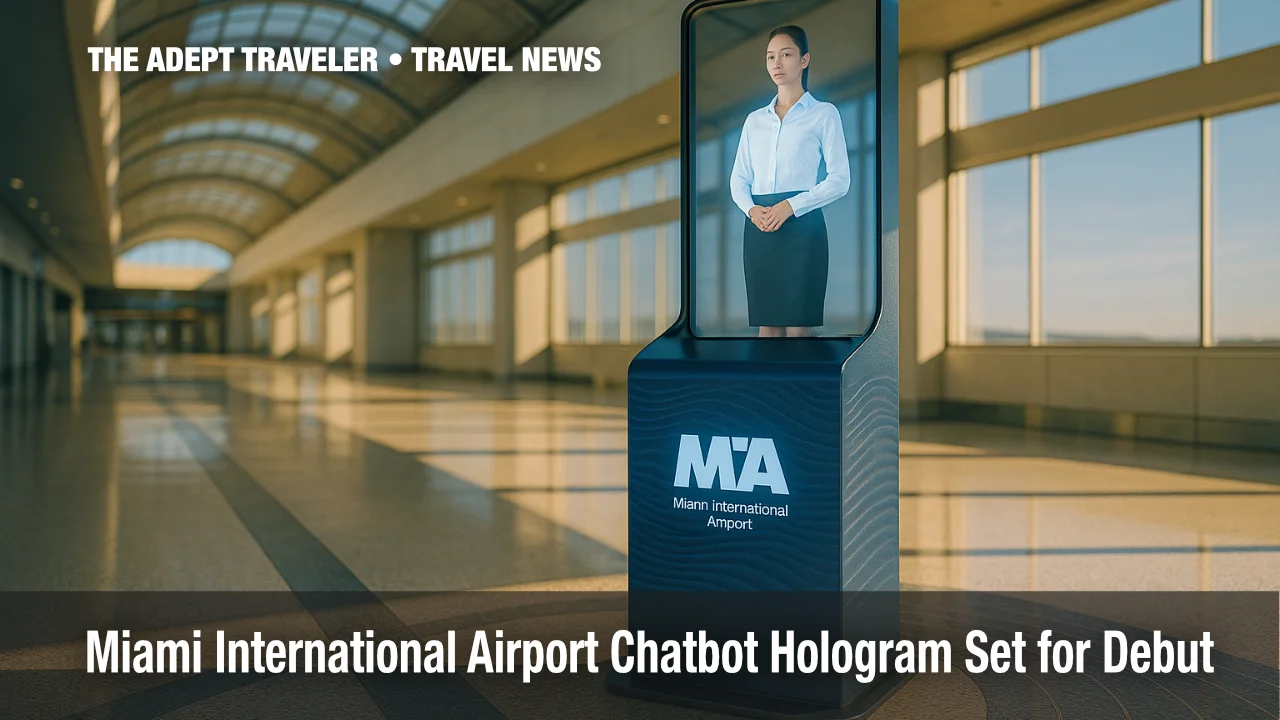Miami International Airport Chatbot Hologram Set for 2025 Debut

Miami International Airport will roll out an omni-channel chatbot that projects as a life-size hologram in 2025. Travelers will ask questions through WhatsApp, Messenger, or by simply talking to the three-dimensional avatar-no app required. Chief Innovation Officer Maurice Jenkins previewed the project ahead of his appearance at World Aviation Festival 2025, stressing that great technology "removes friction" while deepening emotional engagement. His team is pairing the digital guide with sensory branding and robotics as part of a larger push to reimagine the airport as an adaptive ecosystem.
Key Points
- Travelers will converse with a holographic chatbot for real-time airport help.
- Supports WhatsApp, Messenger, and other channels-no standalone app.
- Sensory branding will introduce a signature scent and "Miami drink."
- Autonomous robots will handle cleaning, landscaping, and turnaround analytics.
- Why it matters: The initiative positions MIA as a test bed for human-centred airport innovation.
Snapshot
The chatbot-hologram fusion sits at the heart of MIA's 2025 innovation budget. Mounted near high-traffic decision points, the projection taps the same knowledge base that powers the airport's text and voice bot, delivering gate changes, shopping directions, and flight updates in under three seconds. Because the system is API-driven, any messaging app that supports webhooks can plug in, giving the airport a single content layer while meeting travelers on their preferred channel.
Background
Miami International Airport handled more than 52 million passengers last year, making rapid information delivery a constant challenge. Jenkins' team has spent the past five years piloting biometrics, digital way-finding, and autonomous cleaning machines. Those proofs of concept informed today's omni-channel plan, which marries cloud NLP, edge rendering, and a lidar-based presence sensor. The project complements broader capital upgrades and a $9 billion expansion program already under way at Miami International Airport (MIA).
Latest Developments
The new digital-human interface leads a four-part roadmap that Jenkins will outline during the Smart Airports & Innovation track at World Aviation Festival (October 7-9, 2025, FIL Lisbon):
1. Conversations Anywhere
- Hologram kiosks launch first in Concourse D, then airport-wide by summer 2026.
- Multilingual NLP supports English, Spanish, and Portuguese at go-live, with six more languages in the pipeline.
2. Sensory Branding
- A custom citrus-mango scent will diffuse through arrivals halls.
- A non-alcoholic "Miami Sunrise" drink debuts in pre-security cafés, extending the destination vibe before baggage claim.
3. Human-Centred Automation
- Fleet of 15 cleaning robots will shift janitorial staff to guest-service ambassador roles.
- Two autonomous lawnmowers will reduce airfield maintenance hours by 30 percent while cutting fuel use.
4. Parallel Reality & Start-up Partnerships
- MIA has inked NDAs with three start-ups exploring personalized digital signage that displays flight data visible only to the intended traveler.
- Additional pilots in baggage vision analytics and curb-to-gate biometric corridors remain "under wraps" until contract finalization in early 2026.
Analysis
For travelers, the holographic chatbot offers a hands-free alternative to hunting information screens or downloading yet another airport app. By layering conversational AI over mixed-reality optics, MIA meets accessibility standards while preserving staff for higher-touch roles. The sensory branding elements aim to slow the passenger journey deliberately-encouraging dwell time that can lift retail and food-and-beverage revenue. Meanwhile, robotics tackle repetitive tasks, freeing employees to focus on exception handling, which improves both morale and service quality. If the kiosk and scent pilots deliver expected ROI, other U.S. hubs may fast-follow, accelerating a shift toward airports as immersive, data-rich environments rather than transit bottlenecks.
Final Thoughts
Miami International Airport's chatbot hologram represents more than a flashy customer-service tool; it signals a strategic pivot toward seamless, emotionally resonant travel journeys backed by data-driven automation. With executive backing, clear ROI targets, and public unveiling at World Aviation Festival 2025, the project could redefine traveler expectations-and set a high bar for digital hospitality anchored by the Miami International Airport chatbot hologram.
